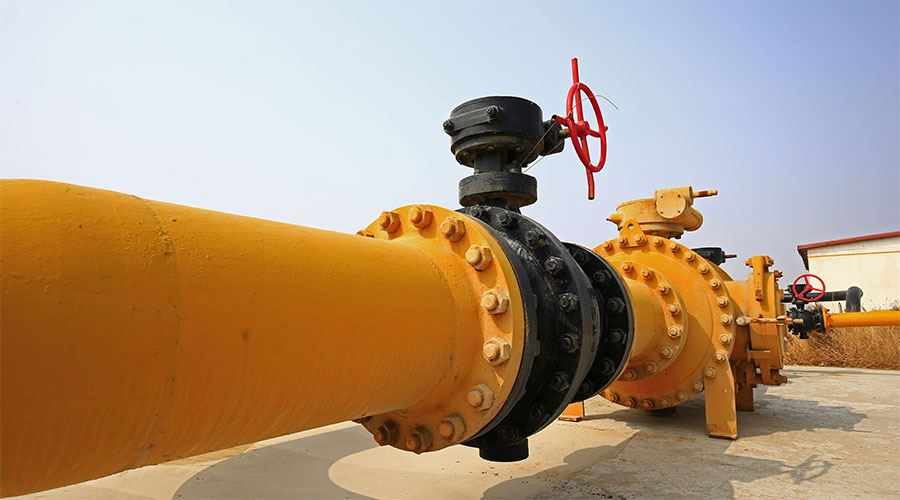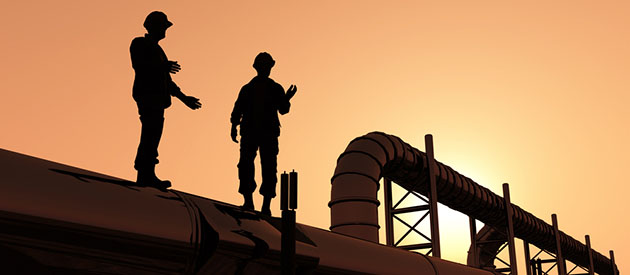I just returned from a week down South with a few of my energy clients. It's good to get my hands dirty and remind myself firsthand what is going on at the project level of some of the country's top energy companies.
But when I returned home this weekend, I made the mistake of flicking on the television and opening the newspaper. I can't believe that the pundits are now predicting that oil will fall to $40 a barrel. They also are projecting that the entire natural gas sector is going to collapse.
Here we go again.
Yes, we are wrestling with an energy sector that remains gun shy on elements from market volatility to geopolitical tensions. And sure, $40 is possible, but only in an improbable situation where global demand for oil completely collapses, along with the world economy.
But we are in a new reality. And such doom and gloom predictions are highly oversimplified and potentially dangerous to you as an investor.
Here's why.
Such predictions are misguided because they rely too heavily on illogical assumptions. These pundits see major changes coming because they single out individual factors and think they describe behavior of the entire energy sector.
That's dangerous, because markets and good investing decisions depend on reliable (and complete) information.
Cherry picking statistics to predict such doom and gloom is a very dangerous game. Not only will you simply end up with a very basic misread of what is going on, it usually provides a very inaccurate sense of what you should do as an investor. These assumptions will end up costing you money if they are not balanced with the other factors in play.
Now then, I really want to dig deeper into this. As your energy guide, I have to.
So let's get started.
Assumption 1: High Investment Means Higher Volumes
There is a common misperception that increased oil and gas investments will translate to higher production volumes. The assumption here is that there are no other elements affecting how much supply exists, or how what is coming out of the ground translates into profit for the investor.
And that is both untrue and very risky.
Now, it might seem logical that higher investment means higher return. After all, it has been a staple tenet among market analysts until recently that higher product prices encourage investment while lower prices discourage it.
But this sort of logic assumes that all oil being taken out of the ground is the same.
Simply put: It isn't.
No longer can we as investors rely on the procurement and profits of light sweet (and inexpensive) crude.
What is now being drilled is heavier, higher-sulfur content. Viscosity (thickness and flow) levels of these fuels are much higher, making them more expensive to drill and transport. These fields produce less oil but require greater levels of capital to procure.
Also, these conventional sources of oil are coming from smaller fields, located in areas posing economic and political difficulties, while requiring considerable additional investment in absent infrastructure and transport. The U.S. Geological Survey concluded that more than three quarters of the significant conventional oil and gas fields left on the planet are likely to be found in deepwater or above the Arctic Circle.
The oil may be there, but it will take considerably greater amounts of investment to move it out. These additional levels of investment, therefore, are representing theadded cost of finding and extracting oil, not the automatic connection between more capital committed resulting in move oil available.
And such costs will be factored into the price of oil moving forward. There's no way that an oil company will continue to sell oil at $40 a barrel if it costs them $55 to $75 a barrel to take heavier oil out of the ground from these more expensive fields.
An Exception Based on Assumptions
However, Iraq is often presented as an exception to this capital disconnection.
There, the argument runs, considerable reserves are about to be extracted and that volume will almost single-handedly change the oil market. Presto, global oil supply problem solved.
The reserves are almost certainly present. But that does not mean they will be entering the international market anytime soon. Since I advise in both Iraq and Kurdistan (the semiautonomous region of northern Iraq), I have spent some time with the projections and the reality.
Iraqi exports will increase, but not significantly for years. There are four major reasons why not.
- Iraq has no Oil Law and sectoral disagreements are now moving against it. Without the law, regional political disputes will reduce overall production. The disagreement between Baghdad and northern Kurdistan on oil and gas development, for example, has already introduced a major political crisis.
- The increase in production at major fields is under the control of large international oil companies operating in Iraq on service contracts producing a low per barrel figure of payment. It will take some time for these companies to recover their investments with additional production beyond contracts unlikely.
These companies also need to balance any additional Iraqi production against their extractions elsewhere in the world. Otherwise, they reduce their profits from other production over which they have greater control.
- Iraq will be provided with a monthly production quota from OPEC, of which it is a member. It has not had one for over two decades. OPEC will use the quote system to maintain distribution among its members and that will curtail how much new oil comes on line. For its part, Baghdad needs OPEC and has already indicated it will abide by whatever quota emerges.
- The infrastructure, power generation, and logistical coordination are in shambles. These deficiencies will cap additional production and extraction well before levels the pundits boldly predict.
Will that oil eventually move into the international system? Some of it will, but it is going to take years, with no change that any noticeable amounts will emerge within the next decade.
Sorry, no quick fix here, regardless of how much is invested.
Capital Concerns in Unconventional Sources
So what about unconventional sources?
It is certainly the presence of shale oil and gas that has transformed the production landscape in North America, providing more domestically produced volume than considered possible only a few years ago.
Yet, even here, the rapid investment injection has created more problems than anticipated. We are now looking at the prospect of increasing natural gas production significantly on an annual basis, given the largess of shale, tight gas, and coal bed methane.
Simply put, the increase in investment and the resulting drilling that has created the gas surplus, a plunging gas price, and a multiyear low in drilling rig usage. The issue here is not a simple relationship between higher investments resulting in greater volumes of gas.
The situation directly resulted in a loss to retail investors.
As for shale and tight oil, the rising volume has also translated into rising costs for treatment, upgrading, initial processing, and transport of heavy product to refineries. All of this is increasing the cost of using unconventional production, requiring expensive changes at refineries, and introducing a widening range of costly environmental problems.
This is not to say the new source of oil should be discarded.
Quite the contrary.
What it does mean, however, is the added investment into the process does not automatically result in cheaper or increasing volumes. We may be using more domestic oil, but it is more expensive to extract and process.
The even larger picture also reveals the shortsightedness of the high investment assumptions approach to the energy sector. None of this considers the true stimulant for higher prices (and greater returns to the individual investor).
Infusion of money into new fields does not generate demand for the end product. The demand that spurs the need for more supply and the resulting rise in prices to improve stock picks is also global in scope. Market prices are not fundamentally determined by U.S. or Western European demand, but by the need for oil products in developing and emerged economies around the world.
Here, there will be a staggering need for greater construction of new field systems, pipelines, pressure stations, gathering and initial processing facilities, storage facilities, wholesale distribution and retail outlets, and refineries.
Worldwide demand is now hostage to a series of geopolitical, economic, and financial considerations. It is not, however, dependent on more investment.
The individual investor needs a better picture than the simplistic idea that throwing more money at the development side automatically results in a higher return on production.
But if you think this is a distorted view of what the investor needs in the way of good advice, just wait until you see the one I'll be exposing in Friday's Oil & Energy Investor.
Keep an eye out.
Kent Moors
Oil & Energy Investor


























































